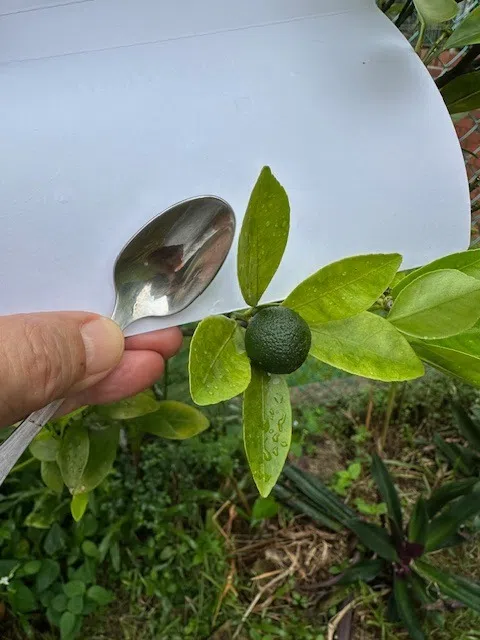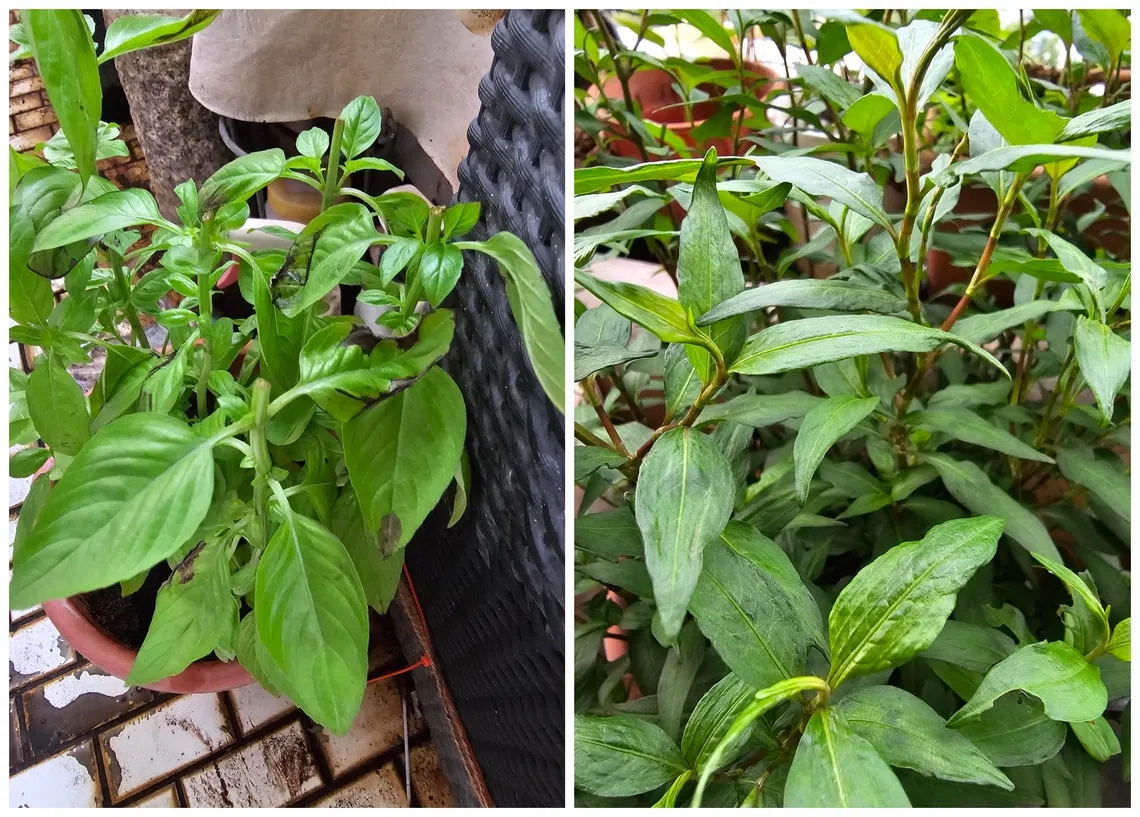Root Awakening
Black patch on Peperomia leaf likely due to injury
Sign up now: Get ST's newsletters delivered to your inbox

If the spot on the damaged leaf spreads, remove the leaf.
PHOTO: ADRIAN LING
Wilson Wong
Follow topic:
What is causing the black patch on my plant’s foliage and how do I treat it?
Adrian Ling
The black patch is likely due to an injury, possibly caused by rainwater or another substance, such as fertiliser or pesticide, that was sprayed onto it.
The wound may become infected by pathogenic fungi or bacteria. If it spreads or appears wet, prune the entire leaf.
Lime tree needs moisture, nutrients

The pale colour of the leaves indicates a possible nutrient deficiency.
PHOTO: LEE CHEE CHEE
My lime tree’s fruit are hard and small. What can I do to improve this?
Lee Chee Chee
First and foremost, ensure your plant is well-watered. Avoid letting it dry out totally. Lime trees need moist but well-draining soil for a healthy root system.
The pale colour of the leaves indicates a possible nutrient deficiency. If the soil is clay-like and hard, work in some compost to improve its structure.
Feed your plant with fertiliser pellets, which you can buy at local nurseries. Get one that has a balanced NPK ratio with trace elements to supply your plants with nutrients for healthy growth.
Avoid overfeeding holy basil plant

Nitrogen-rich fertiliser can promote rapid and abundant growth, which is prone to pests and disease.
PHOTO: DASGUPTA SUDHANSU RANJAN
My holy basil plant gets direct sunlight each day, but its leaves and stems appear limp and weak. I occasionally notice small white insects under some leaves, but they usually fly away. What is wrong and how do I help my plant grow?
Dasgupta Sudhansu Ranjan
Your holy basil’s new growth looks slightly stretched – the leaf-to-leaf distance is longer than that in the older, lower parts of the plant.
This plant needs at least four hours of direct sunlight a day. A lack of light can lead to stretched, floppy-looking growth. Rotate the plant regularly to achieve a more even growth habit.
Also, avoid overfeeding your plant with nitrogen-rich fertiliser. Nitrogen can promote rapid and abundant growth, which can be soft and attract sap-sucking pests, as well as being prone to mechanical damage and disease. Soft new growth will also lack flavour.
Holy basil plants need slightly dry soil. Do not let the soil become waterlogged, as wet feet may lead to disease. Let the root zone dry out slightly between watering sessions.
Ficus is suffering from transplant shock and sunburn

One week is not enough time for a repotted plant to recover from transplant shock.
PHOTO: TOH MEI LIN
Why are my plant’s leaves turning brown? I repotted it a few weeks ago and cut off overgrown roots. I have placed it on the balcony with almost full sunlight throughout the day, although I kept it in the shade a week after repotting.
Toh Mei Lin
The Fiddle-leaf Fig could have suffered from transplant shock when you trimmed its roots. Damaged roots cannot take up water, and a plant that has undergone such a procedure should be placed in a shadier, cooler spot to recuperate.
The plant needs time to produce new roots, and should not be placed back in the sun right away. One week is not sufficient.
If your plant was previously grown in a shadier spot, its leaves likely adapted to those conditions and will burn under more intense light. Brown leaves will not revert to their original colour.
For now, move your plant to a shadier and cooler spot. Keep the root zone moist but not wet. Gradually move the plant back to brighter light when you see new growth, so the young leaves can adapt to higher light levels.
Edible plants are basil and laksa

The plant on the left is likely Thai basil, while the other one is a laksa plant.
PHOTOS: HSU LI REN
I bought these plants from an online shopping platform a month ago. What are they?
Hsu Li Ren
The plant on the left is a type of basil, most probably Thai basil, while the other one is a laksa plant. Both are culinary herbs and their leaves can be used for cooking. Keep them in a sunny spot and water them regularly.
Answers by Dr Wilson Wong, an NParks-certified practising horticulturist and parks manager. He is the founder of Green Culture Singapore and an adjunct assistant professor (Food Science & Technology) at the National University of Singapore.
Have a gardening query? E-mail it with clear, high-resolution pictures of at least 1MB, if any, and your full name to . We reserve the right to edit and reject questions.

